Security of supply
With a 25 per cent share of net electricity generation of 2,785 terawatt hours (2021), nuclear power is the most important electricity generation technology in the EU, ahead of natural gas, coal and wind power. It is also the most important source of low-carbon electricity generation. Nuclear energy combines high availability and reliability to cover electricity consumption in line with demand with extremely climate-friendly electricity generation.
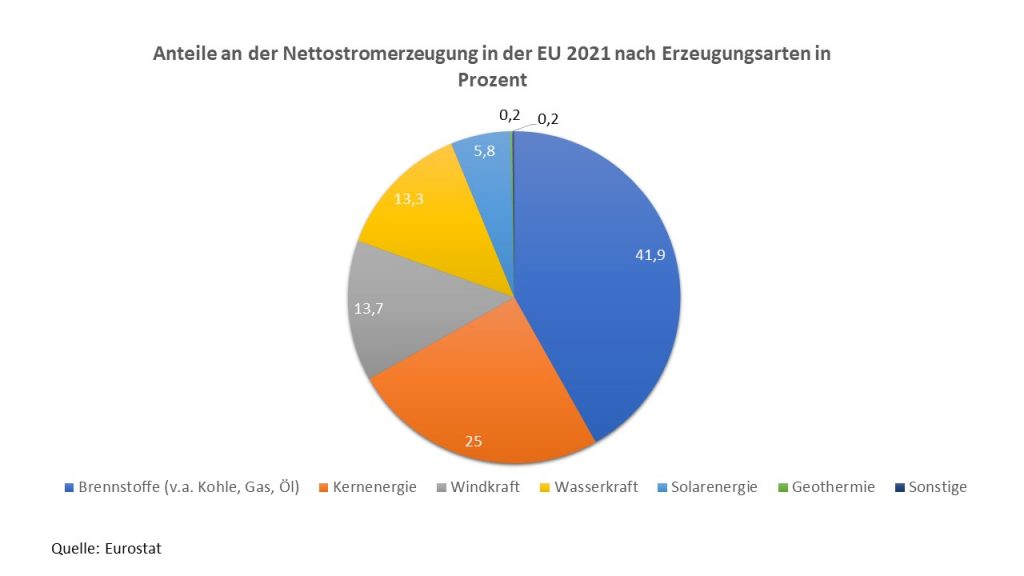
Due to its high availability and good controllability, nuclear energy can be easily integrated into the existing supply infrastructure and does not require any extensive expansion measures for the electricity grids or control interventions to stabilise the grid, nor does it require any additional storage capacities, special precautions for load management or other interventions in consumer behaviour.
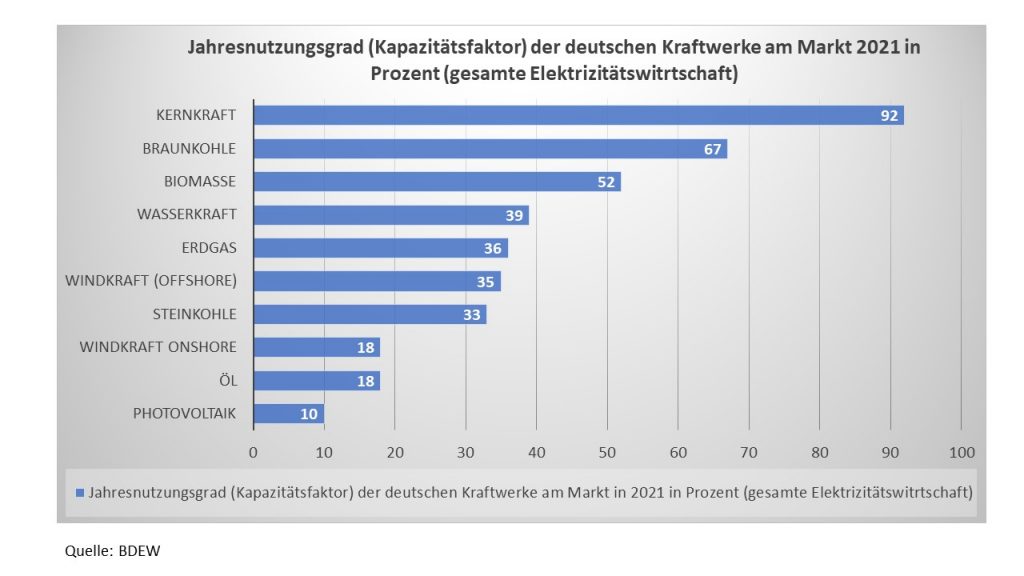
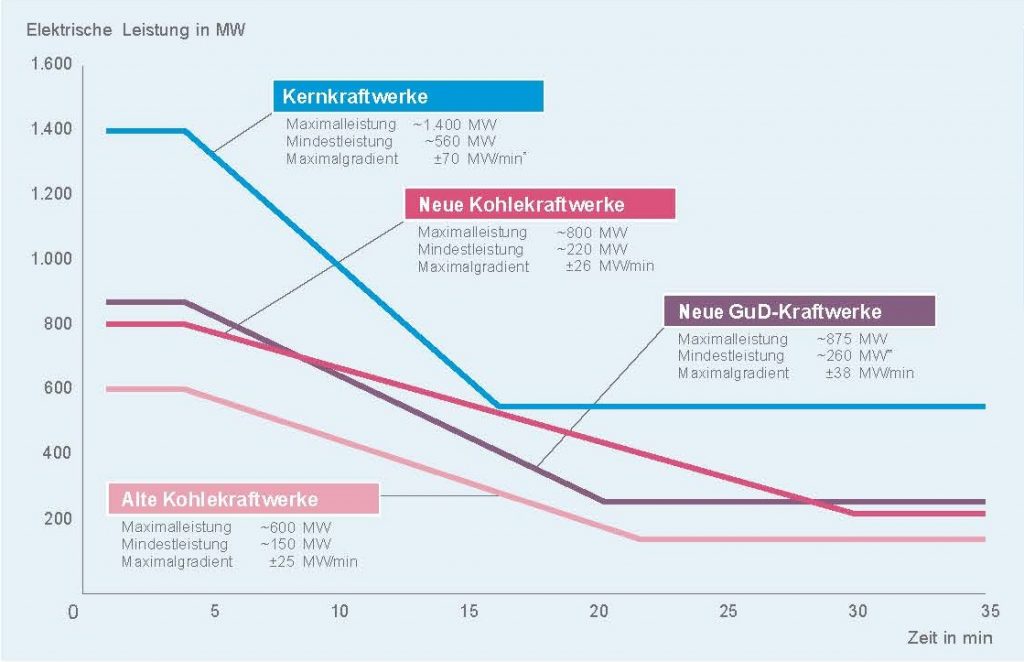
Together with other conventional thermal power plants, nuclear power plants contribute to the power supply during high loads or low production of volatile renewable energies due to their high secured output. With the high rotating masses of their turbine sets (turbine rotors and generator), they also contribute to stabilising the grid frequency (instantaneous reserve) and provide other important grid services (voltage stability, reactive power compensation). Nuclear power plants can contribute to the primary control reserve and the minute reserve.
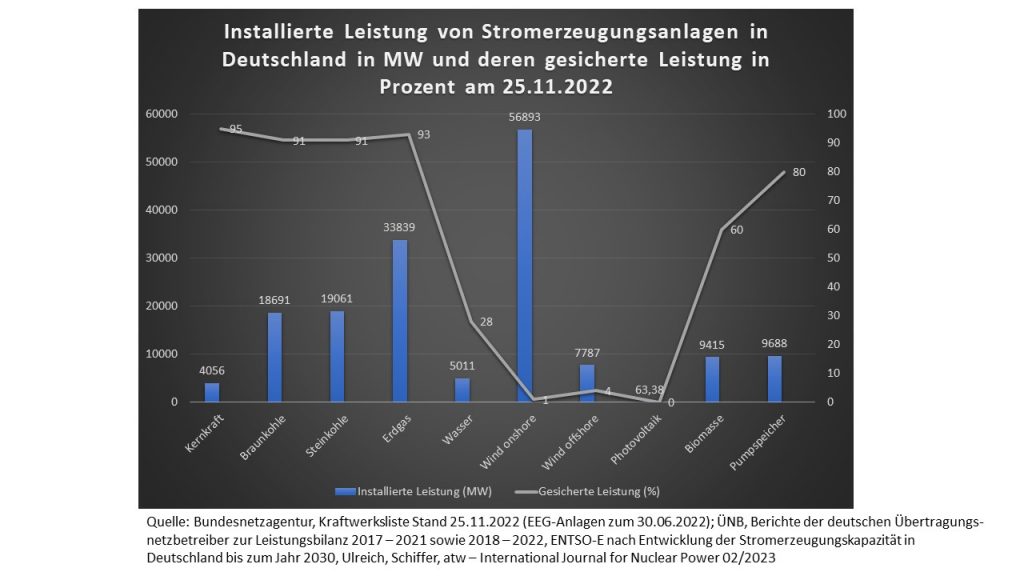
Excursus on quality in the electricity grid:
The criteria for quality in the electricity grid are frequency and voltage stability. The central control variable for the stability of the grid is the frequency of the alternating current in the grid. This frequency must be 50 Hertz (Hz) throughout the European grid and may only fluctuate slightly. Grid regulation, i.e. the equalisation of fluctuations, begins at deviations of 0.01 Hz, i.e. at frequencies below 49.99 Hz or above 50.01 Hz.
Fluctuations in the grid frequency are triggered by power fluctuations on the consumer side - simultaneous switching on or off of larger loads (= electricity consumption) - or on the generator side if there is a sudden loss of generation capacity. Faults in the grid itself can also lead to frequency deviations. Such fluctuations must be equalised very quickly by the grid control system so that disturbances do not amplify themselves. The grid operators have staggered instantaneous reserve, primary control power, secondary control power and minute reserve at their disposal to compensate for fluctuations.
Instantaneous reserve: automatically and immediately provided by the rotating masses of the turbine and generator sets of conventional power plants due to their inertia; generation plants from renewable energies such as wind turbines or photovoltaic systems do not contribute to the instantaneous reserve.
Primary control power: provided by a large number of controllable generation plants in the interconnected grid, each with a small share of the generation capacity, available within 30 seconds; a total of 3,000 MW of primary control power must be available in the European interconnected grid.
Secondary control power: available within 5 minutes, provided mainly by pumped storage plants and gas turbines.
Minute reserve: requested by telephone instruction (partially automated since 2012) from controllable generation plants as part of the schedule operation; the minute reserve must be retrievable or deactivatable within 15 minutes.
In the European interconnected grid, a frequency of 49 Hz is considered an alarm value at which the first shutdowns of generation plants and consumers, i.e. power outages, can occur.
A description of the security of supply in the electricity grid and its function can be found in this publication:
Uranium supply
Security of supply also includes the good availability of uranium on the global market from various sources. Uranium and the services required to process it into nuclear fuel are traded worldwide. Both the EU's uranium procurement and global production are diversified. Due to its high energy density, it is easy to transport and can be stored to a considerable extent. In the EU, for example, the uranium required for around three years of production is stored in various forms and processing stages. In addition, with the stocks of depleted uranium from enrichment, which can be further depleted and thus utilised, as well as plutonium and uranium from reprocessing, there are several secondary sources that can supplement the imported natural uranium. For these reasons, nuclear energy is regarded by many countries as an important building block for energy independence and is utilised or expanded accordingly. In addition, compared to fossil-fuelled power plants, only a significantly smaller proportion of the value added in nuclear power generation is attributable to the (imported) energy source. The greater part lies in domestic, technological value creation, especially if a country also has its own nuclear industry and its own fuel cycle facilities, such as an enrichment plant and a fuel element production facility.
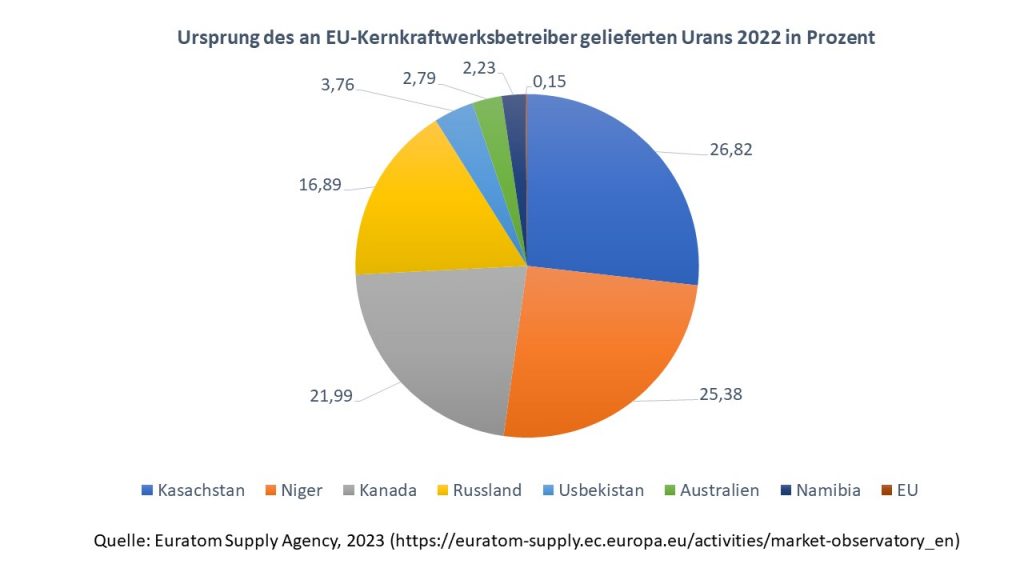
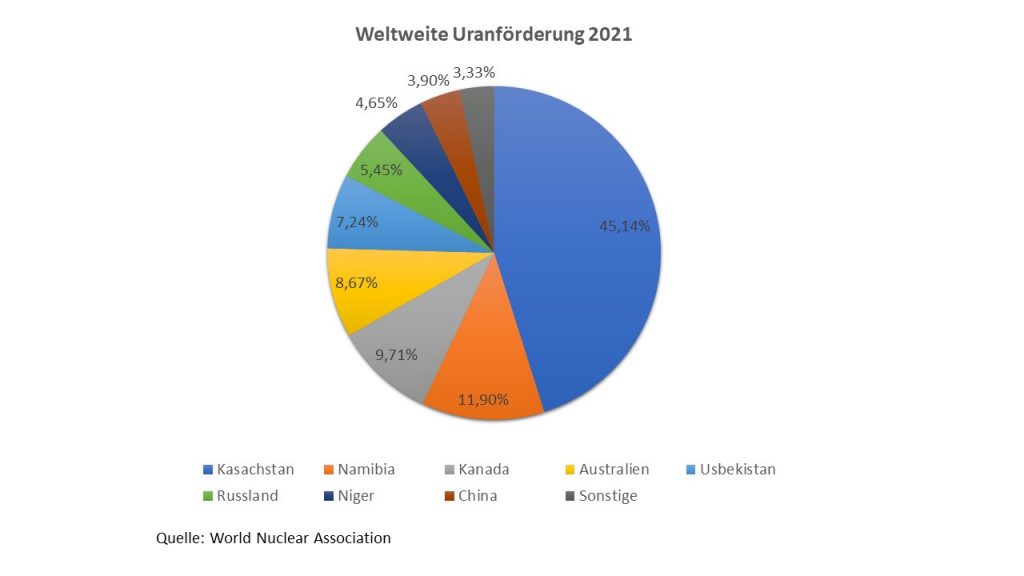
Uranium reserves
Various categories of uranium reserves and resources are considered and categorised in terms of the required extraction costs. The following section looks at the reserves and resources that the International Energy Agency (IEA) and the OECD's Nuclear Energy Agency estimate can be extracted for USD 130 per pound of "yellow cake" (U3O8) can be mined. Without taking into account the mining technology of in-situ leaching, there are 6,147,800 tonnes of identified, mineable, conventional uranium deposits worldwide. The use of in-situ leaching (ISL), which is already used for 66 per cent of the uranium mined today, increases this figure to 8,070,300 tonnes of natural uranium. By way of comparison, global demand is currently around 62,000 tonnes of natural uranium per year, meaning that the deposits are sufficient for around 100 or 130 tonnes. In addition, there are 3,791,700 tonnes or 4,971,400 tonnes (with ISL) of resources that have been confirmed with reasonable certainty and 2,355,700 tonnes or 3,098,900 tonnes (with ISL) of resources whose existence is inferred from the geological data, often in the area of already exploited or confirmed deposits. Taking ISL technology into account, the three resource classes therefore comprise approx. 16.14 million tonnes of natural uranium or around 260 years of demand. Despite the extraction of uranium, the volume of uranium resources is constantly increasing as a result of targeted exploration or other acquisition of geological knowledge.
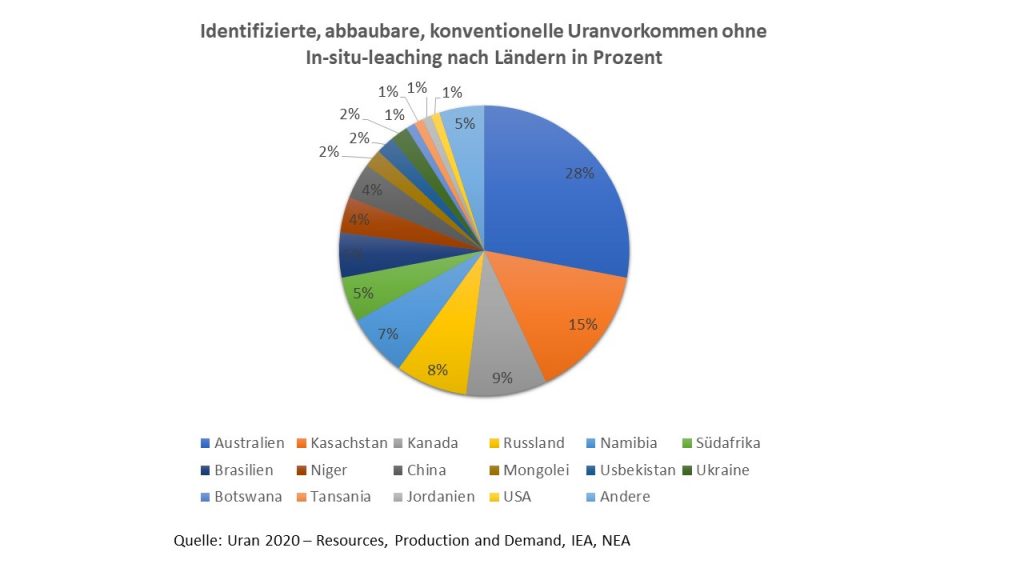
In addition, there are so-called projected and speculative resources totalling 2.86 million tonnes and a further 8.5 million tonnes in the highest cost category of 260 dollars per pound U3O8which, however, cannot be exploited economically in the foreseeable future or require technical advances to make extraction more cost-effective. This also applies to a large proportion of the so-called unconventional resources, the volume of which is in the double-digit million tonne range.
The same applies to the largest known uranium resource by far, the water in the oceans. Around 4 billion tonnes of uranium are dissolved here, i.e. around a hundred times the resources of the part of the earth's crust that is technically accessible to us. As the ocean floor is constantly being renewed by tectonic processes and new material is always emerging from the seabed, from which uranium can be leached, as well as by erosion processes from land, this resource represents a renewable source of uranium. However, due to the low uranium content of the water, its utilisation is still far too expensive and therefore uneconomical.



